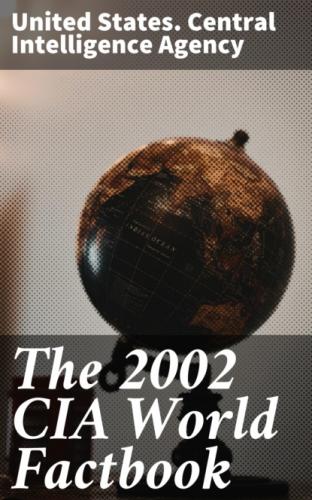Population below poverty line: NA%
Household income or consumption by percentage share: lowest 10%: NA% highest 10%: NA%
Inflation rate (consumer prices): 358% (2001 est.)
Labor force: 14.51 million (1993 est.)
Labor force - by occupation: agriculture 65%, industry 16%, services 19% (1991 est.)
Unemployment rate: NA%
Budget: revenues: $269 million expenditures: $244 million, including capital expenditures of $24 million (1996 est.)
Industries: mining (diamonds, copper, zinc), mineral processing, consumer products (including textiles, footwear, cigarettes, processed foods and beverages), cement
Industrial production growth rate: NA%
Electricity - production: 5.268 billion kWh (1999)
Electricity - production by source: fossil fuel: 2.05% hydro: 97.95% other: 0% (1999) nuclear: 0%
Electricity - consumption: 4.55 billion kWh (1999)
Electricity - exports: 404 million kWh (1999)
Electricity - imports: 55 million kWh (1999)
Agriculture - products: coffee, sugar, palm oil, rubber, tea, quinine, cassava (tapioca), palm oil, bananas, root crops, corn, fruits; wood products
Exports: $750 million (f.o.b., 2001 est.)
Exports - commodities: diamonds, copper, coffee, cobalt, crude oil
Exports - partners: Benelux 62%, US 18%, South Africa, Finland, Italy (1999)
Imports: $1.024 billion (f.o.b., 2001 est.)
Imports - commodities: foodstuffs, mining and other machinery, transport equipment, fuels
Imports - partners: South Africa 28%, Benelux 14%, Nigeria 9%, Kenya 7%,
China (1999)
Debt - external: $12.9 billion (2000 est.)
Economic aid - recipient: $195.3 million (1995)
Currency: Congolese franc (CDF)
Currency code: CDF
Exchange rates: Congolese francs per US dollar - 305 (January 2002), 21.82 (2000), 4.02 (1999), 1.61 (1998), 1.31 (1997) note: on 30 June 1998 the Congolese franc was introduced, replacing the new zaire
Fiscal year: calendar year
Communications Congo, Democratic Republic of the
Telephones - main lines in use: 21,000 (1997)
Telephones - mobile cellular: 15,000 (2000)
Telephone system: general assessment: poor domestic: barely adequate wire and microwave radio relay service in and between urban areas; domestic satellite system with 14 earth stations international: satellite earth station - 1 Intelsat (Atlantic Ocean)
Radio broadcast stations: AM 3, FM 11, shortwave 2 (2001)
Radios: 18.03 million (1997)
Television broadcast stations: 4 (2001)
Televisions: 6.478 million (1997)
Internet country code: .cd
Internet Service Providers (ISPs): 2 (2000)
Internet users: 1,500 (1999)
Transportation Congo, Democratic Republic of the
Railways: total: 5,138 km narrow gauge: 3,987 km 1.067-m gauge (858 km electrified); 125 km 1.000-m gauge; 1,026 km 0.600-m gauge note: severely reduced route-distance in use because of damage to facilities by civil strife (2000 est.)
Highways: total: 157,000 km (including 30 km of expressways)(1996) paved: NA km unpaved: NA km
Waterways: 15,000 km (including the Congo and its tributaries, and unconnected lakes)
Pipelines: petroleum products 390 km
Ports and harbors: Banana, Boma, Bukavu, Bumba, Goma, Kalemie, Kindu,
Kinshasa, Kisangani, Matadi, Mbandaka
Merchant marine: none (2002 est.)
Airports: 232 (2001)
Airports - with paved runways: total: 24 over 3,047 m: 4 2,438 to 3,047 m: 3 914 to 1,523 m: 2 (2001) 1,524 to 2,437 m: 15
Airports - with unpaved runways: total: 208 1,524 to 2,437 m: 20 914 to 1,523 m: 96 under 914 m: 92 (2001)
Heliports: 1 (2001)
Military Congo, Democratic Republic of the
Military branches: Army, Navy, Air Force, Special Security Battalion
Military manpower - availability: males age 15-49: 11,996,175 (2002 est.)
Military manpower - fit for military service: males age 15-49: 6,110,595 (2002 est.)
Military expenditures - dollar figure: $250 million (FY97)
Military expenditures - percent of GDP: 4.6% (FY97)
Transnational Issues Congo, Democratic Republic of the
Disputes - international: Democratic Republic of the Congo is in the grip of a civil war that has drawn in military forces from neighboring states, with Uganda and Rwanda supporting the rebel movements that occupy much of the eastern portion of the state; Tutsi, Hutu, and other conflicting ethnic groups, political rebels, and various government forces continue fighting in Great Lakes region, transcending the boundaries of Burundi, Democratic Republic of the Congo, Rwanda, and Uganda; most of the Congo River boundary with the Republic of the Congo is indefinite (no agreement has been reached on the division of the river or its islands, except in the Pool Malebo/Stanley Pool area)
Illicit drugs: illicit producer of cannabis, mostly for domestic consumption
This page was last updated on 1 January 2002
========================================================================
China
Introduction
China
Background: For centuries China stood as a leading civilization, outpacing the rest of the world in the arts and sciences. But in the 19th and early 20th centuries, China was beset by civil unrest, major famines, military defeats, and foreign occupation. After World War II, the Communists under MAO Zedong established a dictatorship that, while ensuring China's sovereignty, imposed strict controls over everyday life and cost the lives of tens of millions of people. After 1978, his successor DENG Xiaoping gradually introduced market-oriented reforms and decentralized economic decision making, and output quadrupled by 2000. Political controls remain tight even while economic controls continue to be relaxed.
Geography China
Location: Eastern Asia, bordering the East China Sea, Korea Bay, Yellow
Sea, and South China Sea, between North Korea and Vietnam
Geographic coordinates: 35 00 N, 105 00 E
Map references: Asia
Area: total: 9,596,960 sq km land: 9,326,410 sq km water: 270,550 sq km
Area - comparative: slightly smaller than the US
Land boundaries: total: 22,147.34 km border countries: Afghanistan 76 km, Bhutan 470 km, Burma 2,185 km, Hong Kong 30 km, India 3,380 km, Kazakhstan 1,533 km, North Korea 1,416 km, Kyrgyzstan 858 km, Laos 423 km, Macau 0.34 km, Mongolia 4,677 km, Nepal 1,236 km, Pakistan 523 km, Russia (northeast) 3,605 km, Russia (northwest) 40 km, Tajikistan 414 km, Vietnam 1,281 km
Coastline: 14,500 km
Maritime claims: 200 NM continental shelf: Climate: extremely diverse; tropical in south to subarctic in north
